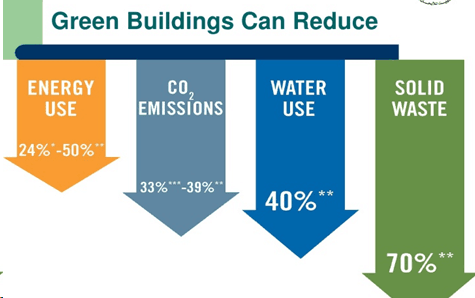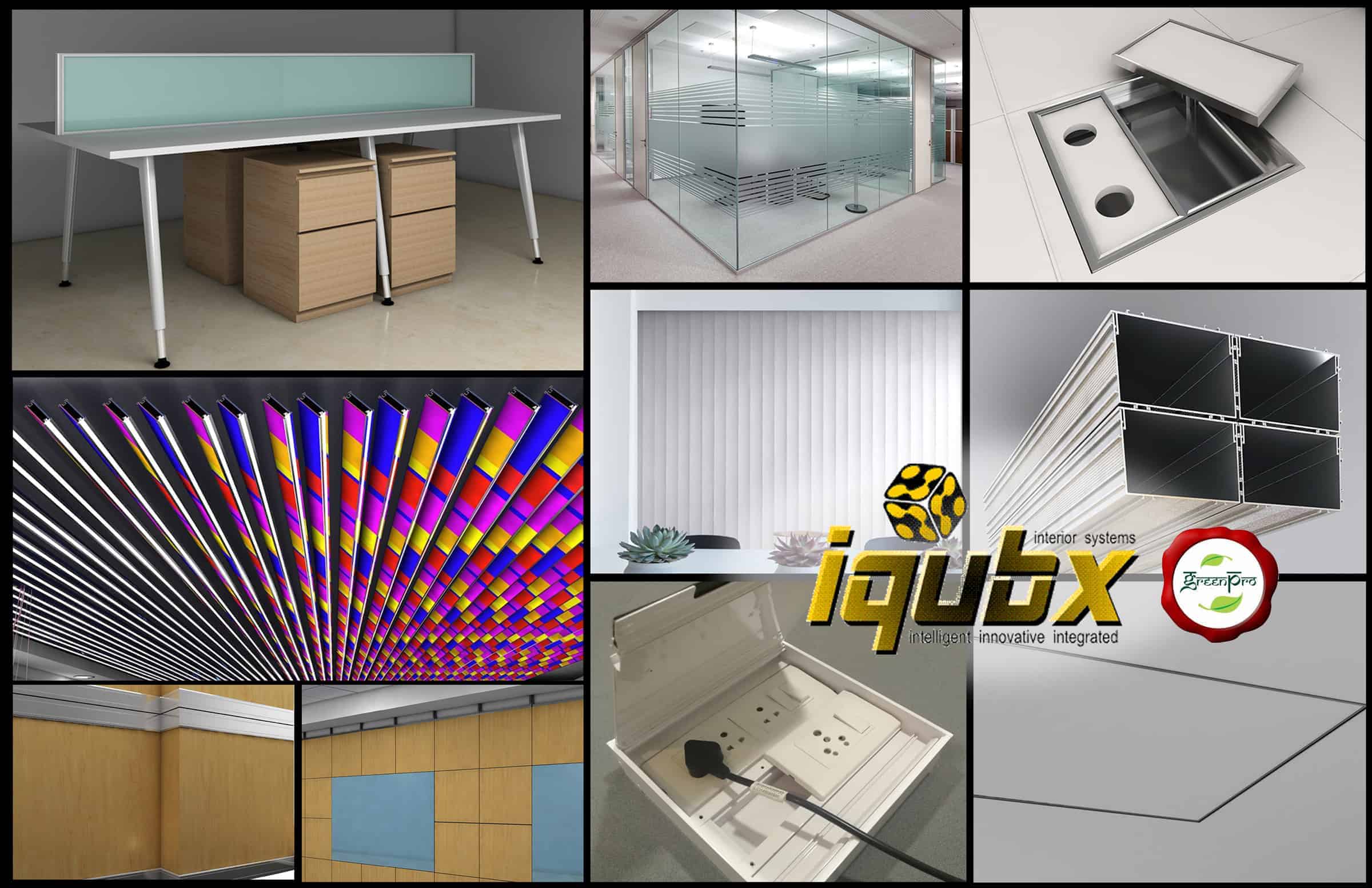What is Green Building?
Green building is the practice of creating structures and using processes that are environmentally responsible and resource efficient. World green building council defines it as “A ‘green’ building is a building that, in its design, construction or operation, reduces or eliminates negative impacts, and can create positive impacts, on our climate and natural environment. Green buildings preserve precious natural resources and improve our quality of life.”
We can also say that Green building design and construction is a method that wisely using resources to create homes and commercial buildings that are:
-
- High-quality
- Healthier
- more energy-efficient
Why do we need Green Buildings?
Globally, buildings are responsible for a huge share of energy, electricity, water and materials consumption.
Buildings account for 18% of global emissions today, or the equivalent of 9 billion tonnes of CO2 annually. The building sector has the greatest potential to deliver significant cuts in emissions at little or no cost.

environmental benefits of green building
According to the UN Environment Program, If new technologies in construction are not adopted now, emissions could double by 2050.
Green building practices aim to reduce the environmental impact of building.
Green Buildings Vs. Conventional Buildings
The main benefits of a green building when compared to a conventional building
Environment friendly
- conserves natural resources like water and energy
- Generates less waste and pollution
Cost Saving
- uses energy and water efficiently
Health benefits
- Provides healthier spaces for occupants
Green Building benefits example
Rajiv Gandhi International Airport, Hyderabad is India’s 6th busiest airport. It has set a benchmark for the green buildings in India. The structure of the airport is designed in a way so as to consume less water, electricity and conserves natural resources. Within the campus of the airport, there is a green belt of 273 hectares with numerous plants. In the last couple of years, RGIA has been successful in saving energy for nearly 3.97 million kWh and has reduced the carbon footprint by 3331 tons.
https://upload.wikimedia.org/wikipedia/commons/f/fa/Rajiv_Gandhi_International_Airport_View.jpg
How to make our buildings green?
#1 Use energy intelligently
#2 Conserve water resources
#3 Keep environment green
#4 Minimize waste and maximize reuse
#5 Promote health and well being of all
Using Energy Intelligently
We can reduce inherent energy consumption in construction of buildings by using energy efficient raw materials with low carbon foot print and products. This is done by
- using materials produced nearby
- using recycled material
- Materials with low VOC to minimize effect on health and ozone layer
- Materials with low maintenance and longer life cycle. IQUBX makes such products for interiors which have minimum wastage and are made from 100% recycled aluminium
- We can reduce energy use by efficiently using natural or day light
- Make new and renovated buildings more comfortable and less expensive to run by reducing air conditioning costs. Example: Green Roofs (Roofs partially or completely covered with vegetation) reduce energy use and cost for heating and cooling
- Use a mix of renewable and low-carbon technologies to meet buildings’ energy needs. Example: Wind Turbines can be set up on roof to generate power! Solar Panels can be set up on roof to generate power as well as heat bath water!
Conserving Water Resources
- Rainwater Harvesting Systems can be installed on rooftops of buildings to collect the rain water. This water can later be used to wash cars, watering plants & other cleaning purposes.
- Permeable pavement or pavers with the spaces in between filled with grass or stones, also allow rainwater to be absorbed
- Water can be conserved with ultra-low flush toilets and low-flow faucets.
- Gray water (water that cones from bath sinks, kitchens & washing machines) can be used to flush lavatories. The Solaire in Battery Park City, New York, treats 25,000 gallons per day. Recycled water is used for flushing toilets, replacing the water evaporated from cooling towers, laundry and garden irrigation. When compared to similar buildings in the city, the building has halved both its water consumption and wastewater.
Keeping Our Environment Green
- Green landscapes and spaces create reduced need for cooling of buildings in tropical climates
- Green landscapes allow water conservation by creating reservoirs
- Green cover minimizes heat reflection back to buildings
- Green cover also reduces the pollution levels and improves IAQ
Minimizing Waste and Maximizing Reuse
- Green buildings are built using fewer and more durable materials and so generate less waste.
- Recycled industrial goods such as coal combustion products, foundry sand, and demolition debris are used in their construction.
- Composting is done to minimize waste going to the landfill and produce nutrient-rich humus for the soil.
- While designing a green building, it is also planned how the waste to be generated on its demolition will be reused.
- Building users are trained to reuse and recycle.
Promote Health and Well being
- Bringing fresh air inside
- Delivering good indoor air quality through ventilation
- Avoiding materials and chemicals that create harmful or toxic emissions.
- Incorporating natural light and views to ensure building users’ comfort and enjoyment of their surroundings
- creating the right indoor temperature so that people are comfortable.
Green Building Certification
Most nations have their own Green building councils. These are supported by World Green Building council (GBC) and give Green building certification. This certification confirms that a building meets one or more of the following conditions:
- Efficient use of energy and water
- Sustainability
- Protection of the environment
LEED (Leadership in Energy and Environmental design) is a prominent US-based certification agency. It has a point based certification system.
IQUBX products are certified GREENPRO by IGBC, CII
About IQUBX
IQUBX is a DIPP recognized startup MSME with very innovative GREENPRO certified Modular Furniture & Interior Systems based in India.
We develop customized solutions for our clients as well.
Please check our website www.iqubx.com to know about these products and use / recommend them to promote sustainability.
Our products have been certified GREENPRO by Indian Green Building Council, Confederation of Indian Industries, probably the first and the only products to be certified GREENPRO in their categories in the country.
Bibliography
businessfeed.sunpower.com/articles/written-what-is-a-green-building
https://en.wikipedia.org/wiki/Green_building
https://igbc.in/
Lokaa.in/blog/top-10-green-buildings-india/
For more information on the products and placing orders
Call +91 9999001967, 8506074444, 7065444402
Or email at info@iqubx.com and amit@iqubx.com
Visit our site www.IQUBX.com to check out more products
We wish to tie up in India and other countries for marketing these products. Please connect with me for collaborations.
Subscribe to our newsletter for latest updates!


